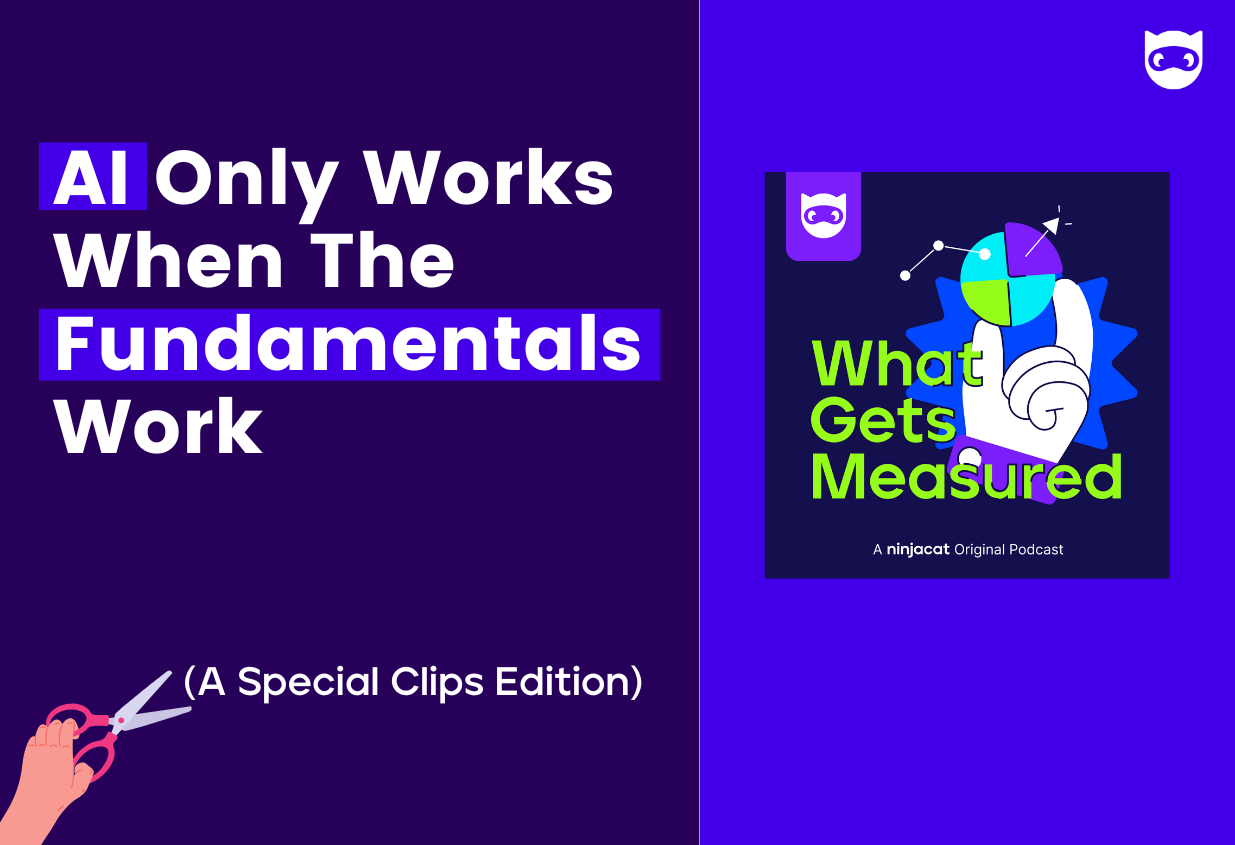Five Reasons Why ROI Can Be Misleading

While Return on Investment (ROI) is a commonly used metric in marketing to evaluate the effectiveness of campaigns and initiatives, there are certain situations where it may not provide a comprehensive view or can be misleading. While there are numerous posts from very smart marketers about this topic, we will focus on five reasons which explain why ROI can be a misleading metric to track in marketing.
1. Limited Scope
ROI typically focuses on financial returns and fails to capture other valuable marketing outcomes such as brand awareness, customer satisfaction, or long-term customer loyalty. Marketing efforts aimed at building brand equity or fostering customer relationships may not immediately translate into direct financial gains, leading to an incomplete assessment of overall success.
Tim Ambler’s excellent article for WARC, “ROI Is Dead, Now Bury It,” explains how ROI is a limiting, and potentially disastrous, metric to use in marketing.
“A typical response in support of using ROI is that the ratio is useful for comparing alternative uses of the same budget,” says Ambler. “In fact, if the I (Investment) is constant, then profit peaks at the same point that ROI does, so the ratio is still redundant at best and possibly misleading. The immediate reaction to a high ratio is the expectation that more should be spent which means that the I is no longer constant and the argument fails.”
Simply put, striving to maximize Return on Investment (ROI) can be counterproductive when considering your company’s overall goals, such as profitability, cash flow, and shareholder value. In such cases, the marketing expenditure tends to fall below the desired level to make a meaningful impact. It is important to recognize that investors, analysts, and stakeholders primarily focus on profit (Revenue minus Investment) rather than an artificial ratio of the two figures.
2. Timeframe Considerations
ROI calculations often take into account short-term gains, making them unsuitable for evaluating long-term marketing strategies. Some initiatives, like brand building or content marketing, may take time to yield tangible results. Relying solely on ROI may overlook the long-term benefits these strategies can provide.
In "The Long and Short of It," Les Binet, a renowned marketing expert, explores the relationship between long-term brand-building efforts and short-term sales activation in advertising. Binet argues that a balanced approach between the two is crucial for achieving sustainable business success. He emphasizes the significance of brand-building activities, which involve creating emotional connections, establishing distinct brand identities, and fostering customer loyalty over the long run. These efforts help drive long-term growth and profitability.
On the other hand, Binet acknowledges the importance of short-term sales activation to generate immediate results and maintain market share. However, he cautions against overemphasizing short-term tactics at the expense of long-term brand equity. Binet provides empirical evidence and insights derived from extensive research, guiding marketers to strike the right balance between long and short-term strategies for optimal marketing effectiveness.
3. Incomplete Attribution
Calculating ROI can be challenging when multiple marketing channels and touchpoints are involved in the customer journey. Accurately attributing conversions or sales to specific marketing activities can be complex, especially in an increasingly interconnected digital landscape. ROI may not account for the influence of various touchpoints, leading to an inaccurate assessment of the impact of individual marketing efforts.
Rand Fishkin of Sparktoro has documented this ROI-driven attribution problem in a stunning article which is worth quoting here.
“Facebook, Google, and Amazon have intense, high pressure incentives to show that buying ads on their platform works,” explains Fishkin. “And, they have a similarly strong incentive to hide any data suggesting that organic investments pay off. Hence, when you buy ads, the numbers look really good. And when you earn organic traffic, attribution hovers between incredibly-difficult-to-prove and wholly impossible.”
Brands, regardless of their size, are compelled to invest in ad platforms even if the ROI isn’t great and the decision lacks friction. This is primarily due to a perceived lack of alternatives and the need for growth, even at the expense of high customer acquisition costs. As a result, the overall outcome at a macro level is predictable.
For more information on how to measure attribution in a more holistic manner, check our our blog on attribution models in digital marketing.
4. Neglecting Intangible Factors
ROI is primarily focused on quantifiable metrics and financial outcomes, neglecting the intangible aspects of marketing. Factors such as customer perception, brand reputation, or social impact are difficult to quantify and may not be adequately reflected in ROI calculations. Ignoring these intangibles can lead to an incomplete understanding of the overall effectiveness and value of marketing efforts.
Measuring intangible factors in marketing poses challenges, but there are effective approaches available. Marketers can employ surveys, customer feedback mechanisms, and sentiment analysis of social media to gather subjective data on brand perception, customer loyalty, and overall experience. Additionally, brand equity measurements, market research studies, and focus groups provide insights into reputation, customer attitudes, and purchase decisions.
Advanced data analytics techniques, such as econometric and attribution modeling, enable the measurement of marketing impact on sales, conversions, and customer behavior. It is important to note that measuring intangible factors involves a combination of quantitative and qualitative data, requiring careful analysis and contextual understanding.
5. Disregarding Long-term Value
ROI tends to emphasize immediate returns on investment, but it may fail to consider the long-term value generated by marketing initiatives. Building customer relationships, brand loyalty, or positive word-of-mouth can have long-lasting effects on a company's success, but these may not be fully captured by ROI calculations focused on short-term financial gains.
Take for instance the shift from efficiency to effectiveness Adidas made a few years ago. In this post from Marketing Week, Adidas explains why they made the switch.
According to Simon Peel, the global media director of the sports brand, the company lacked econometrics and relied solely on last-click attribution modeling four years ago. Furthermore, they did not engage in brand tracking activities. Their primary focus was on efficiency rather than effectiveness, primarily concentrating on reducing the cost of specific key performance indicators (KPIs) without considering the overall well-being of their brands.
Adidas faced a situation where it ended up over-investing in paid search due to a significant oversight in its Latin America market. Surprisingly, a technical malfunction in Google AdWords prevented them from investing in paid search, yet it did not result in a decline in traffic or revenue generated from SEO.
Simon Peel, the company's global media director, highlighted the disparity between the perceived digital narrative and the insights provided by econometric modeling. He stated, "The narrative emphasized the importance of investing in paid search and online display, but econometric modeling revealed a contrasting reality."
Econometrics analysis indicated that Adidas should focus its investments on video content, which had previously been undervalued due to limitations in last-click attribution. Additionally, it recommended allocating resources towards TV, outdoor advertising, and cinema to enhance e-commerce activities.
Adidas is currently engaged in determining the most suitable media and attribution model for its operations. Peel believes that this process will involve incorporating econometrics while adopting a test-and-learn approach to achieve optimal outcomes.
ROI Isn’t The Only Metric To Pay Attention To
While ROI can be a useful metric in many marketing scenarios, it should not be the sole measure of success. To gain a more comprehensive understanding of marketing effectiveness, it is essential to supplement ROI analysis with other metrics that capture a broader range of marketing outcomes and consider the long-term impact of strategies.
For more insights into ROI, check out our podcast “ROI, Lies, and Marketing Data Analytics” with analytics consultant, Andrew Willshire.




.png)
